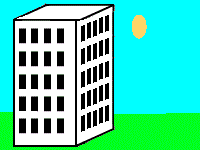Skip over navigation

Or search by topic
Number and algebra
Geometry and measure
Probability and statistics
Working mathematically
Advanced mathematics
For younger learners
You Can't Make an Omelette...
Age 11 to 16
- Problem
- Student Solutions
This resource is part of "Freedom and Constraints"
Imagine you work for a factory that makes egg-shaped ornaments. On the packaging, you need to tell customers how high the eggs can be safely dropped from, without them breaking!

The factory manager gives you an egg to test from each floor of a 100 storey building.
You will need to drop it from the first floor, and if it doesn't break, go up to the second floor, and if it doesn't break, go up to the third floor...
In the worst case scenario, you might have to do 100 tests to find out where it breaks!
"This could take ages! Can I have an extra egg to make life a bit easier?"
"Yes, here you are."
How will you use the extra egg so that you don't need to do so many trials?
Perhaps drop the first egg from the 5th floor and if it breaks, use the second egg to test floors 1 to 4.
And if it doesn't break...
Can you come up with a strategy using both eggs to minimise the number of trials you'd have to do in the worst case scenario?
What other interesting mathematical questions can you think of to explore next?
We have thought of some possibilities:
And if it doesn't break...
Can you come up with a strategy using both eggs to minimise the number of trials you'd have to do in the worst case scenario?
What other interesting mathematical questions can you think of to explore next?
We have thought of some possibilities:
Can you devise the most efficient strategy for finding the highest floor from which you can drop the egg safely?
What if there were more floors?
What if you had more eggs?
What if there were more floors?
What if you had more eggs?
We'd love you to share the questions you've come up with. Tell us also how you got started and any conclusions you have arrived at.
Send us your thoughts; we'll be publishing a selection.
Send us your thoughts; we'll be publishing a selection.

